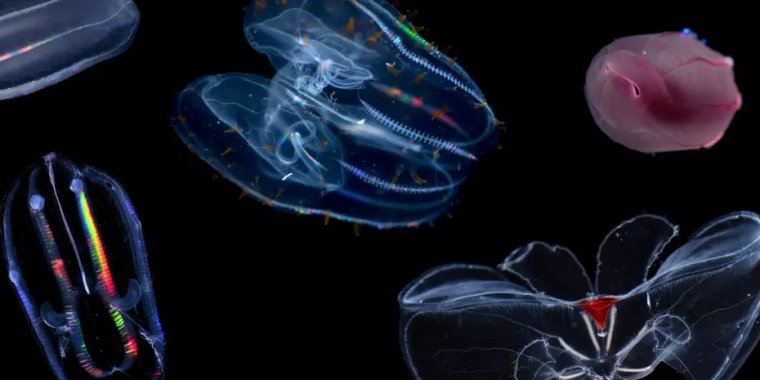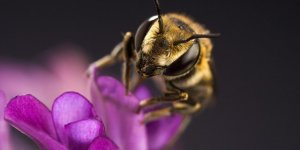| News / Science News |
Deep-sea discovery opens up ocean of potential
New research by scientists making use of U.S. National Science Foundation facilities has provided insight into how related ocean creatures have adapted to live in vastly different environments. The study may also provide new knowledge about the inner workings of human brains.

A collage with five of the comb jelly species studied. Red coloration as seen in the two specimens at right is common among deep-sea animals. Species IDs, clockwise from upper left: Beroe cucumis, Leucothea pulchra, Beroe abyssicola, Bathocyroe aff. fosteri, undescribed mertensiid. Many comb jellies do not have widely used common names. Photo: Jacob Winnikoff
The researchers, working across disciplines of biology and using tools provided by the NSF-supported Center for High-Energy X-ray Sciences at the Cornell High Energy Synchrotron Source found that deep-sea and shallow-water comb jellies have adapted to have differently shaped lipid molecules in their cell membranes.
This allows the comb jellies' cells to form membranes with just the right amount of stability for where they live.
If deep-sea comb jellies are brought up to the surface, however, the membrane structure falls apart from lack of external pressure and the animals "melt."
Going the other way, the membranes in shallow-water jellies are not dynamic enough to perform critical cell functions when they are exposed to deep-sea levels of pressure.
Beyond the knowledge of how deep-sea animals survive in such an extreme environment, the study could help researchers better understand human biology and the progression of neurodegenerative diseases like Alzheimer's.
Plasmalogens, the lipids that make up deep-sea comb jellies' membranes, are also abundant in the human brain, where their loss has been associated with disease progression and aging.
The researchers believe their findings about plasmalogen structure could help illuminate the molecules' function in human physiology and disease.
YOU MAY ALSO LIKE





